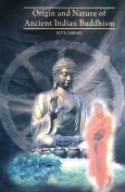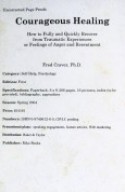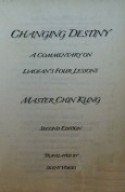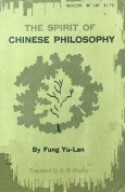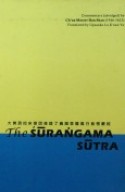Tìm Sách
Sách tiếng Anh-English >> Guide Through Visuddhimagga
Thông tin tra cứu
- Tên sách : Guide Through Visuddhimagga
- Tác giả : U. Dhammaratana
- Dịch giả :
- Ngôn ngữ : Anh
- Số trang : 163
- Nhà xuất bản : Maha Bodhi Society SARNATH VARANASI
- Năm xuất bản : 1964
- Phân loại : Sách tiếng Anh-English
- MCB : 1210000003570
- OPAC :
- Tóm tắt :
INTRODUCTION
Meditation may be said to be the core of Buddhism. Therefore from the very beginning, it formed, an essential part of the Buddhist way of life. Various methods of meditation have been indicated in the discourses of the Buddha and his disciples. The tradition of meditational practices’ was handed down from teacher to pupil through the ages. There is reason to believe that later on manuals on meditation came to be written for the guidance of students. We have such a manual in the form of the Vimuttimagga. The original having been lest, only the Chinese translation, of the work is now extant. Recently an English translation of the same has been made available to the reading public through the joint efforts of a Japanese scholar and two Ceylonese Theras.
The Vimuttimagga existed before the Visuddhimagga. It has been ascribed to Upatissa Thera of Ceylon who lived in the second half of the 1st century. In the beginning its authority was accepted by the Sangha of Ceylon as a whole. Later on the members of the Mahaivihara came to accept certain views introduced by Buddhaghosacariya as more authoritative. As a result the Visuddimpgga became popular with them. However the members of the Abhayagirivihara continued to accept the authority of the Vimuttimagga ledge and insight into the noble path (nãnadassana-vituddhi). Here it has to be noted theft the first and the second purifications are represented by sila and samadhi, and the last five by pannã. Both the Vimuttimagga and the vistiddhtmagga have given their expositions of the subject-matter according to the above two methods.
The Visuddhimagga presents the subject-matter in 23 chapters. Among them the first two chapters are devoted to sila and dhutanga practices, the next eleven chapters to samãdhi, and the last ten chapters to panna.
The present study is in three chapters. The substance of the first two chapters of the text is given in the first chapter of our study, that of the next eleven chapters is given in the second chapter, and that of the last ten chapters is given in the third chapter.
The first chapter is in two sections giving the substance of silas and dhutangas respectively. The second is in three sections dealing with the general principles of samãdhi-meditation, the forty kammatthãna or subjects of samadhi-meditation, and the benefits of the practice of the same as explained in the respective chapters concerned. These two chapters are on the first two purifications.
The third chapter is in two sections. The first section refers to the general explanation of pannã as given in the relevant chapters of the text, and the second refers to the remaining five kinds of visuddi or purifications. Thus we have in a nut-shell the essential points of Visuddhimagga according to both the threefold training and the seven-fold purification.
A few topics of the third and fourth chapters of the text have been re-arranged in keeping with our method of treatment. Then again, the substance of the eleventh chapter has been given before that of the tenth chapter so as to present the 36 rũpa-kammatthãnas together. Except for them, there is no other change in the order of the chapters or their topics.
At the beginning of the chapters and also certain sections, a general survey of the topics has been given. At several places certain facts have been repeated in order to present them in their logical order. The numbers of the chapters have been indicated at the end of the paragraphs setting forth their substance.
There are two English translations of the Visuddhimagga—one by U Pe Tin and the other by Ven’ble Nanamoli Thera. We have closely followed them in choosing the terminology of the technical terms.
If this small work is helpful, even in some measure, to the students in understanding the essential points of the subject-matter, we shall feel highly rewarded.
I take the opportunity of thanking Ven’ble M. Sangharatana Nayaka Thera, Secretary Maha Bodhi Society, Samath, Varanasi for undertaking to: publish this small work for’ the special benefit of the students. I also thank the management of Tara Printing Works’ for their co-operation in bringing out this work in time:
U. DHAMMARATANA
Nalanda,
4. 7. 1964
CONTENTS
Purification of Morality (Sila-Visuddhi)
Dhutangas
Purification of consciousness (citta-visuddbi)
The subjects of Concentration
The five kinds of Super-normal Power Wisdom (panna)
Khandhas
Ayatanas
Dhãtus
The twenty two Faculties
The four Truths
Paticcasamuppada
Purification of views (Ditthi-visuddhi)
Purification through conquest of doubts (Kankhãvitarana-visuddhi)
Purification of knowledge and vision of the right path and, wrong path (Maggã-magganãnadassana-visuddhi)
The knowledge and vision of the way (Patipadãnãnadassana-visuddhi)
Purification by knowledge and vision (Nãnadassana-visuddhi)
 Facebook
Facebook
 Google
Google
 Google+
Google+


